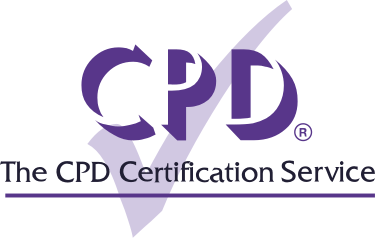3. Understand your audience
Thinking about your audience is a major consideration in any written communication. This is certainly the case with business writing. Understanding your audience will inform the tone, language choice and how you determine the value for them.
Are they knowledgeable of the subject matter, or need the details explained? Does the language need to be highly professional, or in the context can you be more informal? What’s going to make the reader most engaged and interested? Answering all of these questions are key considerations it helps to think about before putting pen to paper to make it as effective as possible.
4. Structure in a readability-friendly way
Within a professional context, everyone’s time-poor. Structuring your writing so it can be easily and quickly understood is vital. Think about every blog, memo, or article you’ve read in a rush - if you can scan it quickly and get the core details, you’re happy. If you have to follow a maze of unclear and poorly signposted content, frustration builds.
Make the key points clear and summarised concisely and signpost where the more granular detail is located or where the reader must go to find it. Allow the reader to go deeper if they want to, but don’t force them. Use short sentences and short paragraphs throughout. This makes your writing appear less daunting (an important visual aspect that will make your content more appealing to your reader) and will help keep your writing concise.
5. Think about tone
Achieving the right tone within business writing is essential. Choose your words well, and you’ll convey confidence, competence, and professionalism. A tip for troubleshooting tone is to read and re-read what you’ve written, paying close attention to ‘hearing’ the tone of it. Make tweaks based on your understanding of the audience and how your words will be received.
If you're able to, ask a colleague or a friend to read what you've written. Often, we hear what we want to hear, so asking a third party to look over it can be a great way to sense-check the tone and the persona it portrays. You likely won’t always get the tone absolutely perfect, but ensuring you don’t stray into a choice of wording that could be read as pretentious, overtly negative or aggressive should help your business writing.
6. Always edit your writing
Lastly, and most importantly: editing. Editing should be treated with as much care as the writing itself.
Not just a proofreading exercise to fix grammatical errors; editing is the practice of improving and fine-tuning everything you write. When editing, look for these common mistakes to strengthen your writing:
Lots of jargon
Jargon is clarity’s arch-nemesis. There are some rare cases where jargon (or very specific technical terms) are needed and will definitely be understood by your audience. These instances, however, are few. Generally, avoid jargon where possible. It is more likely to cause confusion, distract your reader, or worse, cause them to lose trust in you. When you truly understand something, you can explain it in its simplest terms. If something needs explaining, do so with clarity. Don’t hide behind buzzwords and acronyms.
Unnecessary details
In short, cut the waffle. When it comes to business writing, less is usually more. When you’re looking to cut the excess to make your writing more lean look for these common mistakes.
- Unnecessary adjectives can be a useful tool in one's arsenal to add emphasis to a point, but overuse is a common mistake, particularly in business writing. Often people compound multiple adjectives that mean the same thing as it feels like greater emphasis is achieved. In reality, the opposite is the case. It adds unnecessary words and dilutes the message.
- Verb/noun pairs. Often people use more words than necessary by masking verbs as verb/noun pairs. Rather than ‘make a plan to…’ just ‘plan to…’ Rather than ‘I carried out a review on‘ write ‘I reviewed.’
Be ruthless when editing
Read back through what you’ve written. If you can cut words out without changing the meaning of a sentence, it usually means that it can be removed. If you’ve repeated yourself or made the same point in two different ways, cut one.
Watch out for passive voice
Passive voice is when the action in the sentence is happening to the subject, rather than the subject doing the action themselves. This is a weaker, often wordier way of communicating. Writing with active voice will make your writing more impactful and leaner.
- Active voice: Our team delivered a 130% increase of new leads.
- Passive voice: A 130% increase of new leads was achieved by our team.
To make sure your sentence is active, check to see if the subject (the doer) comes before the verb. In the active voice example above, the team (subject/doer) comes before ‘delivered’ (the verb). Also look out for any instances where you see ‘was [verb] by.’ This is a huge signpost telling you your sentence is likely to be passive.
Explore CPD business writing courses
Established in 1996, The CPD Certification Service has over 27 years’ experience providing CPD accreditation. With members in over 100 countries, our CPD providers benefit from the ability to promote themselves as part of an international community where quality is both recognised and assured. If you’re interested in developing your writing skills, there are a number of business writing courses in our catalogue. All the courses shown on our website have been reviewed and recognised as meeting the required industry standards.
We hope this article was helpful. If you are looking to become a CPD Provider, please contact our team to discuss your requirements in more detail. Alternatively, if you want to record your CPD, please go to the myCPD Portal page where you can manage, track and log your learning in one simple place.














